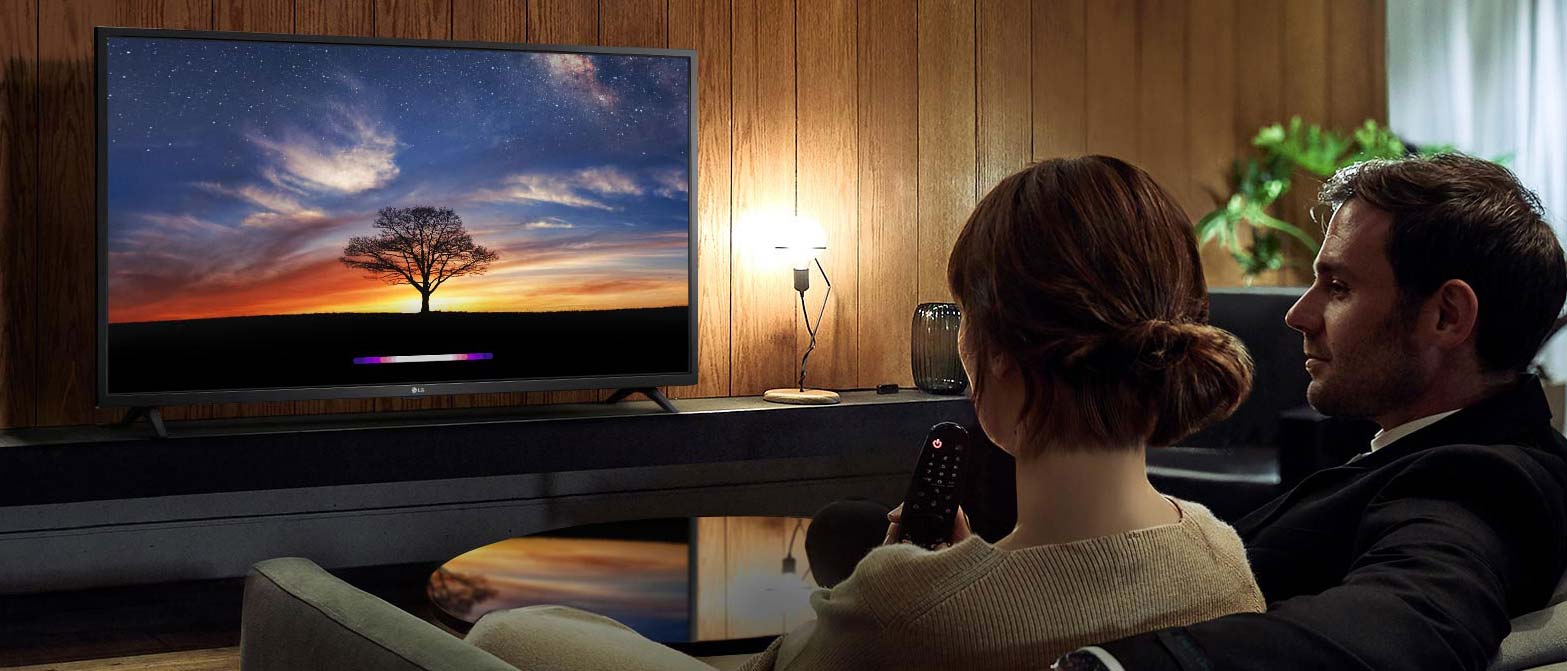Tom's Guide Verdict
The LG UM7300 is a very good 4K TV for the money with strong smart TV features and a bright picture, but it's not the best in its price range.
Pros
- +
Strong brightness levels
- +
Wide viewing angles
- +
Excellent smart TV features
- +
Motion-control remote
Cons
- -
No local dimming
- -
Limited HDR support
- -
Unimpressive black levels
- -
Poor motion handling
Why you can trust Tom's Guide
Price: $649
Model number: 65UM7300PUA
Screen size: 65 inches
Resolution: 3840 x 2160
HDR: HDR10, HLG
Refresh rate: 60 Hz
Ports: 3 HDMI, 2 USB 2.0
Audio: 2 channels, 20 watts
Smart TV Software: webOS with ThinQ AI
Size: 57.6 x 33.5 x 3.5 inches [w/o stand]
Weight: 47 pounds [w/o stand]
The LG UM7300 ($649 for the 65-inch model) is a 4K smart TV that boasts wide viewing angles and a robust smart TV experience. But as LG's most basic 4K model, it does come with some sacrifices, as the UM7300 does without several of the features you might find on the best TVs, even some in the same price range. It omits local dimming and has limited HDR support, but this is balanced out by excellent response times for gaming and a robust smart TV experience.
Editor's Note: (8/14/2020) Even though it's an older model, the LG UM7300 is still being sold. We've updated this review with current information on prices and retail availability. The rating and overall recommendations for the review remain unchanged.
LG UM7300 price and availability
The UM7300 offers a decent LCD TV in a reasonable price range, and it comes in a variety of sizes.
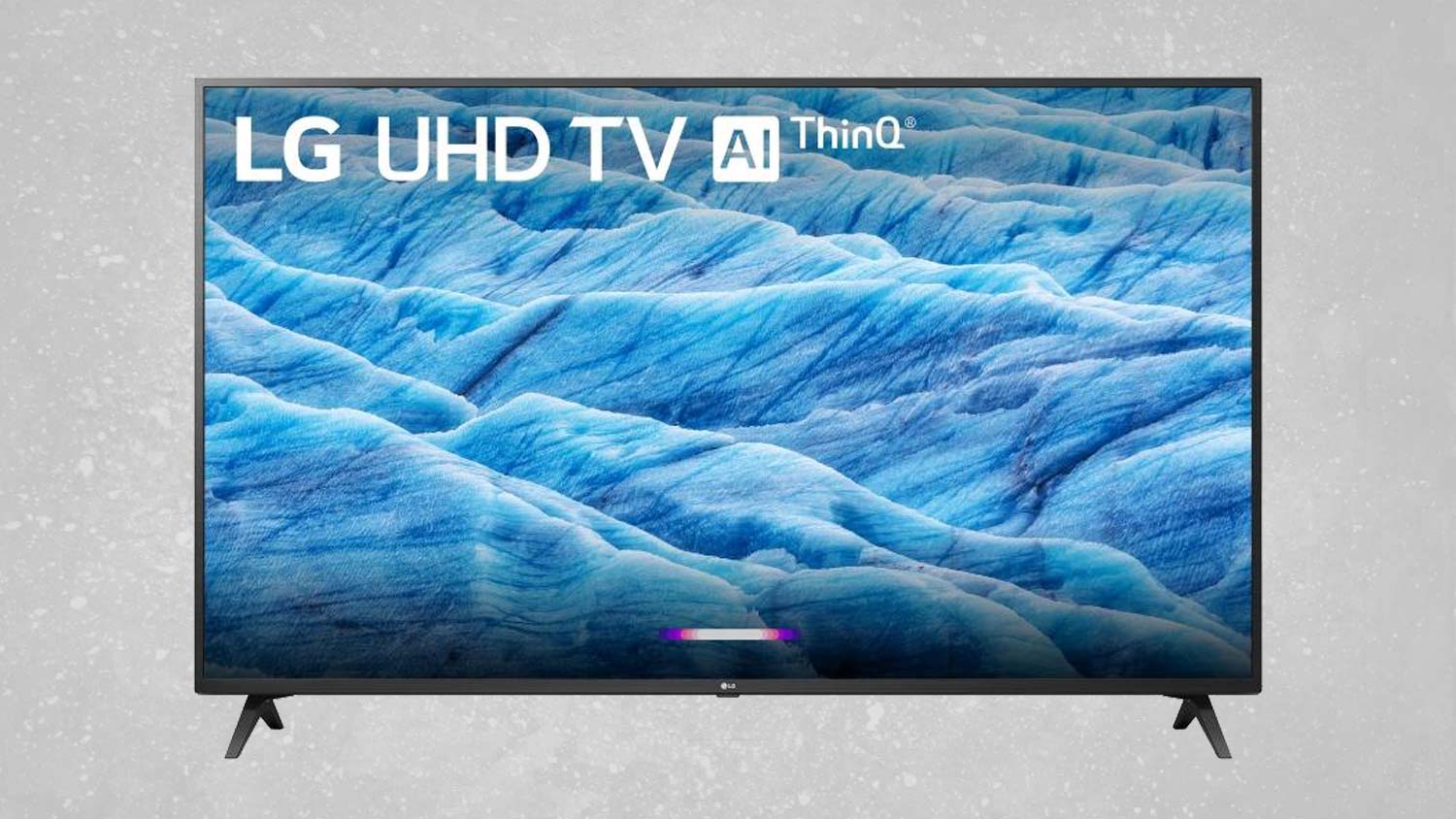
Our review model is the largest option, the 65-inch 65UM7300PUA. We chose this model because the 65-inch version is a top seller across several retailers, and we wanted to give readers the best advice possible for this popular smart TV.
That said, nearly every aspect of our review and evaluation will be applicable to the smaller models that are sold. From the TV design to the smart TV interface, the UM7300 series offers very consistent quality from one size to the next, and the only significant differences should be those that are tied to the size of the panel.
MORE: What is a Smart TV?
The one exception to this broad advice is the 50-inch 50UM7300PUA. Unlike the other models in the UM7300 lineup, this 50-inch variant uses a VA panel instead of an IPS panel. As a result, our notes about display performance won't be as applicable. Due to the differences in technology, we would expect the VA-equipped model to offer better black levels but narrower viewing angles. However, without testing, it's impossible for us to accurately say how this model will really differ from the rest of the model line.
LG UM7300 design
LG may offer some impressive designs on its premium sets, but the LG UM7300 is far more restrained. The design is simple, with chunky black bezels around the screen, a basic stand and a black plastic rear panel that is mostly featureless, but tapers around the top and sides for a less boxy look.
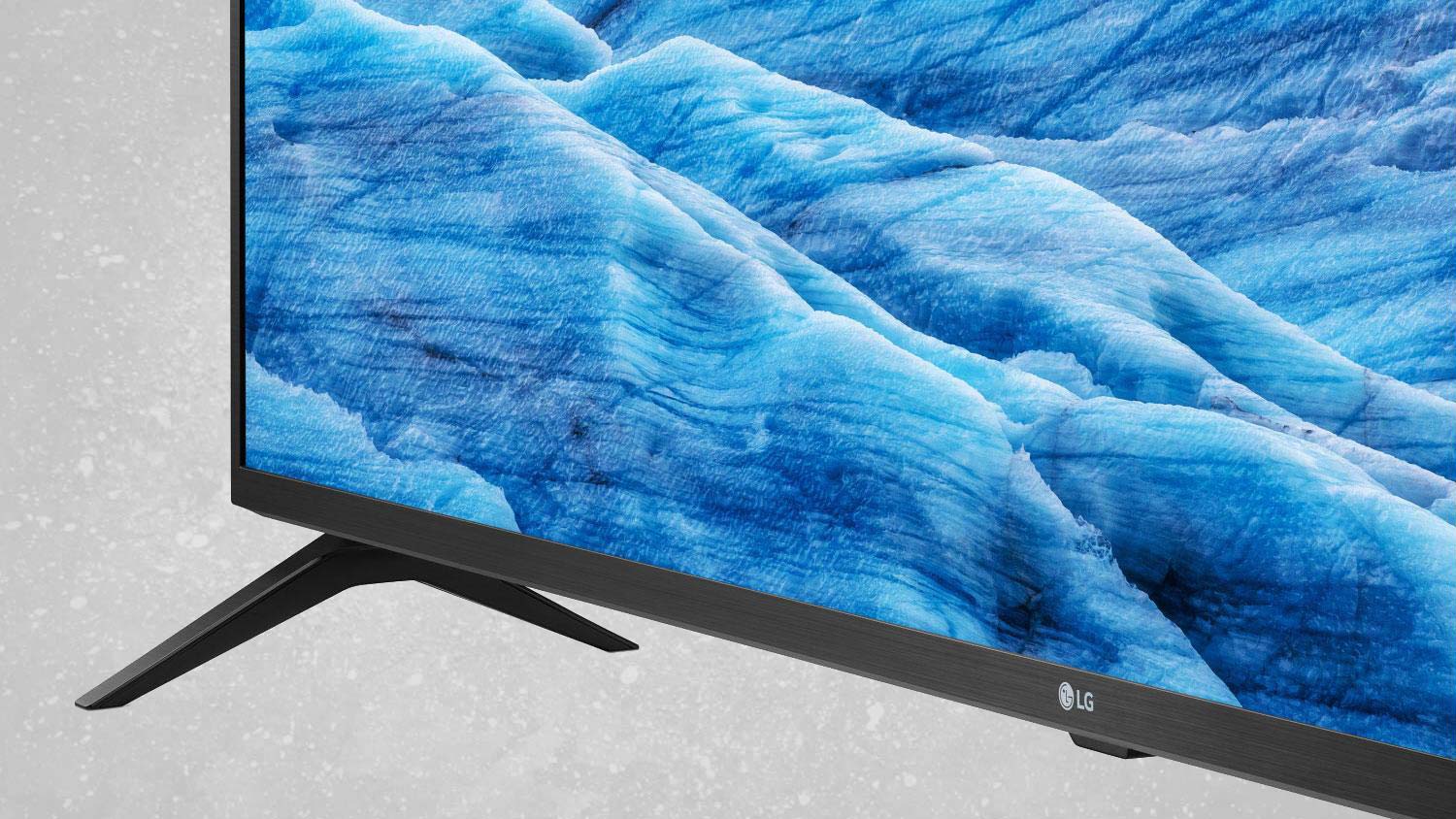
Measuring 57.6 x 33.5 x 3.5 inches without the stand, the UM7300 is big enough that you'll need a second person to help set it up. The UM7300 is a bit thick, measuring almost 3.5 inches through most of its chassis.
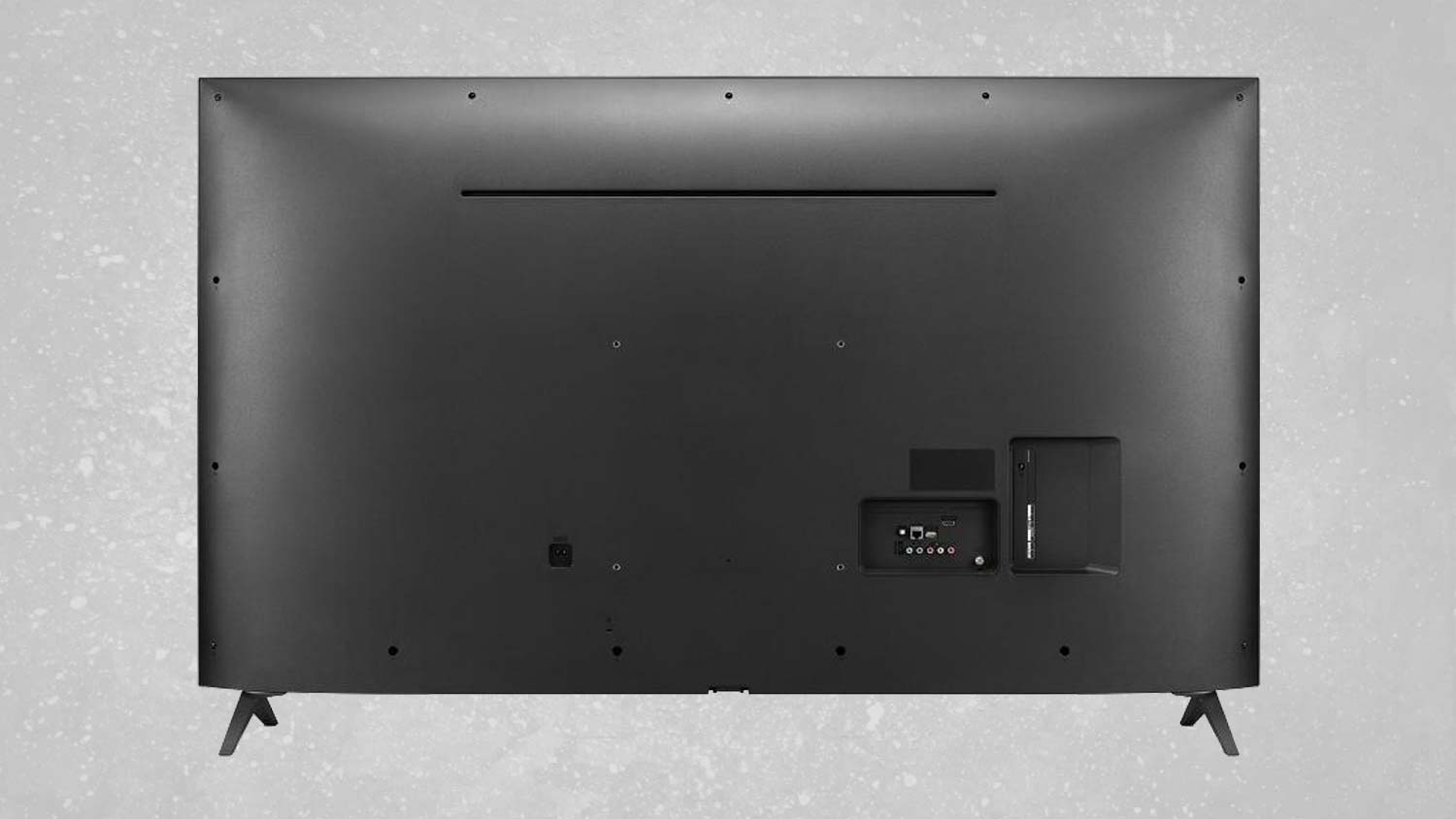
While this provides plenty of room for the internal components and speakers, it does mean that the UM7300 isn't well suited to wall mounting, since it will stick out from the wall by several inches. However, if you do wish to hang it on the wall, the UM7300 will accommodate a 300 x 300-millimeter VESA mount. The 65-inch UM7300 weighs 47 pounds.
LG UM7300 ports
The UM7300PUA is outfitted with three HDMI ports, two USB ports, a coaxial connector for hooking up an antenna and combination component and composite video inputs. There's a LAN port for connecting to your home network via Ethernet, but the TV also has 802.11ac Wi-Fi built in.
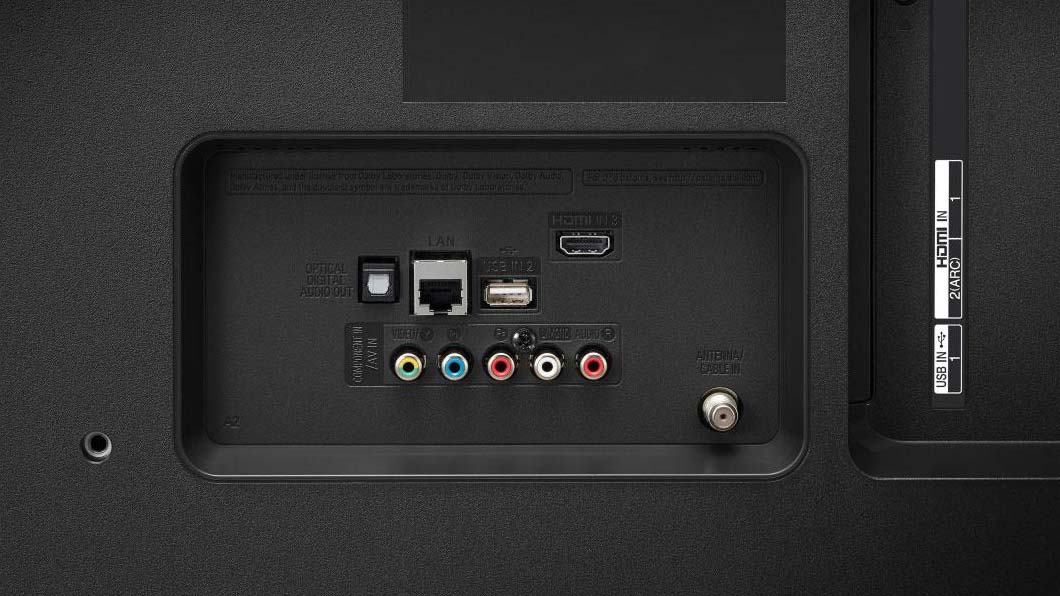
The inputs are divided between a left-facing side panel, which has two HDMI ports and one USB, and a rear-facing panel for the remainder of the ports. For those using a soundbar, the second HDMI port also supports audio return channel, (sometimes called HDMI ARC), letting you use a single HDMI connection for all of the audio.
LG UM7300 performance
The LG UM7300 is an exercise in delivering the basics, giving you some (but not all) of the features you'd expect from a 4K TV. The 65-inch display provides full 3840 x 2160 resolution and looks fairly good for most content. But there were some real issues that stood out as I began watching test samples on the 65-inch TV.
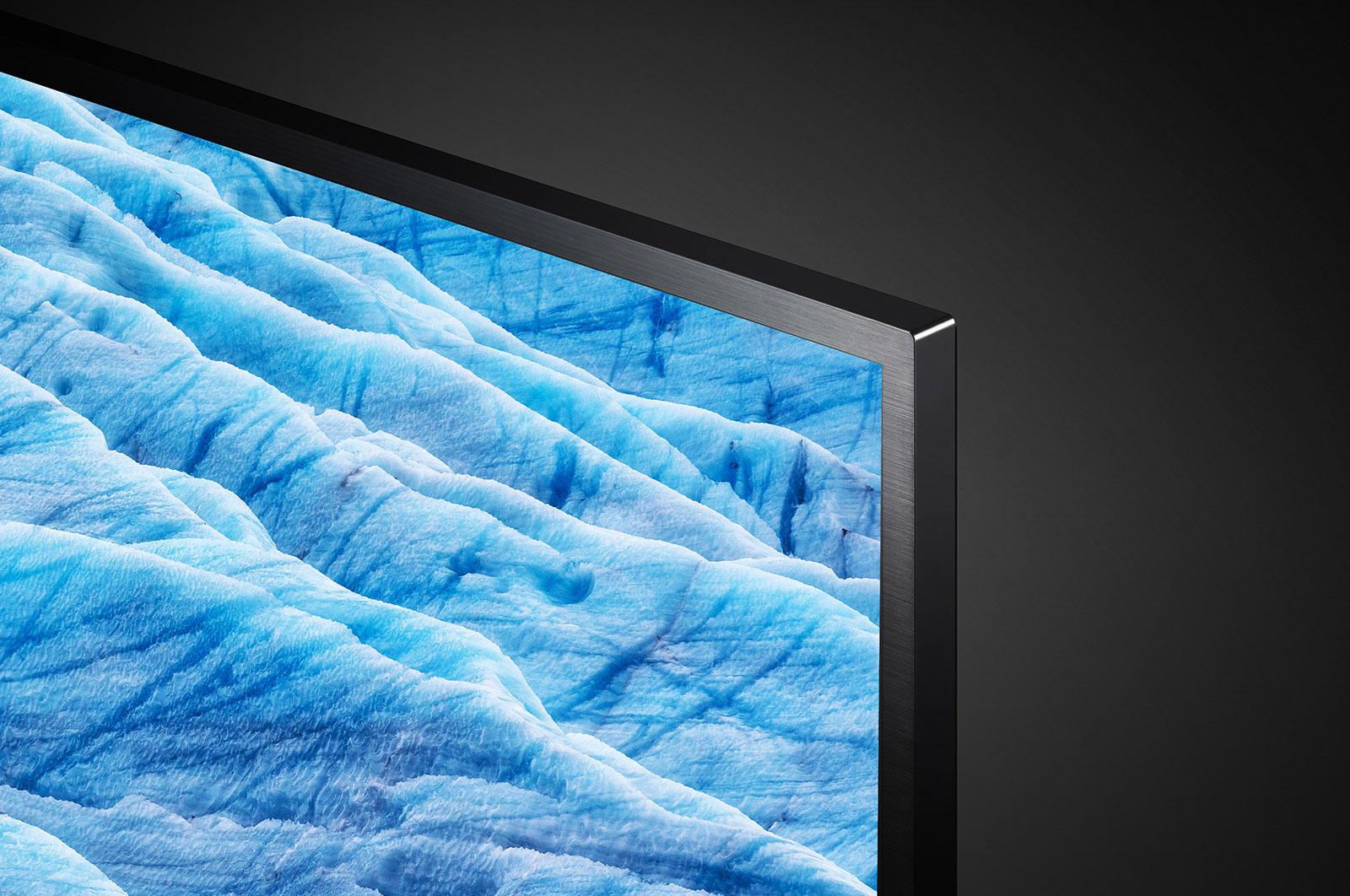
The first was color quality. Watching scenes from Spider-Man: Homecoming, the colors all seemed slightly washed out, with skintones coming across slightly pale, and reds and blues not looking quite as vibrant as they should.
The LG UM7300 is an exercise in delivering the basics, giving you some (but not all) of the features you'd expect from a 4K TV.
Our lab tests back up my initial impressions. When measured using our X-Rite colorimeter, the UM7300 reproduced only 97.9% of the Rec 709 color space. While that's not far off from other affordable sets we've tested, like the TCL 55S425 (97.2%) and the Samsung RU7100 50-inch (96.3%), it's a noticable difference from the excellent Vizio M-Series Quantum (99.9%), which is far closer to the 100% we expect from a 4K TV.
Color accuracy measurements gave us better numbers, with the UN7300 delivering a Delta-E rating of 1.9 (closer to zero is better). While that's better than the Vizio M-Series Quantum (3.6), it's only a tad more accurate than the Samsung RU7100 (2.0) and actually less precise than the TCL 55S425 (1.4).
Thanks to the TV's IPS screen, you'll be able to enjoy the picture from a variety of angles, with minimal color shifting when viewed from the side. However, IPS displays are notoriously poor performers when it comes to black levels, and we saw this on the UM7300 as well.
The UM7300 has direct backlighting, with lights positioned behind the LCD panel, as opposed to edge-lit positions often used for the backlighting on less expensive TVs. However, without local dimming, the high dynamic range (HDR) performance is very limited, and the aforementioned black-level performance is brought further to the forefront by the brightness offered by the backlight. Format support is also restricted to HDR10 and hybrid log gamma (HLG) content, with no support for more premium formats, like Dolby Vision. With no local dimming, brights can ramp up pretty high, but the overall contrast isn't great. All of the blacks and shadows are subsequently washed out, presenting as a glowing gray instead.
Watching a scene from Creed II, as the fighters enter the arena, the entrances are filled with bright lights, pyres of flame and laser lights, but instead of presenting intense highlights against the dark environment, these elements lost a lot of their impact as the darkness lost its depth and the contrasting elements lost their crispness. The overall HDR performance still delivered a better picture than you'd get on an older standard dynamic range TV, but it was nowhere near as impressive as what we routinely see on even more modestly priced HDR-enabled sets.
MORE: Who Makes the Smartest Smart TV?
I also saw some mediocre motion handling. Whether it was the web-slinging action of Spider-Man: Homecoming, or the flying fists of Creed II, fast motion introduced many unwanted artifacts, and hazy smearing was easy to see whenever something moved quickly on-screen. Switching to cinema mode and turning on motion smoothing reduced these problems, but not completely. In every mode, I saw jerky motion instead of smoothness and smearing instead of crisp detail.
LG UM7300 gaming
One area where the UM7300 delivers a pretty great experience is in gaming. When we connected our Xbox One X to the set, we were pleasantly surprised to see the TV automatically detect the game console and switched over to a special deep-color mode that supports the 10-bit color offered by the console.
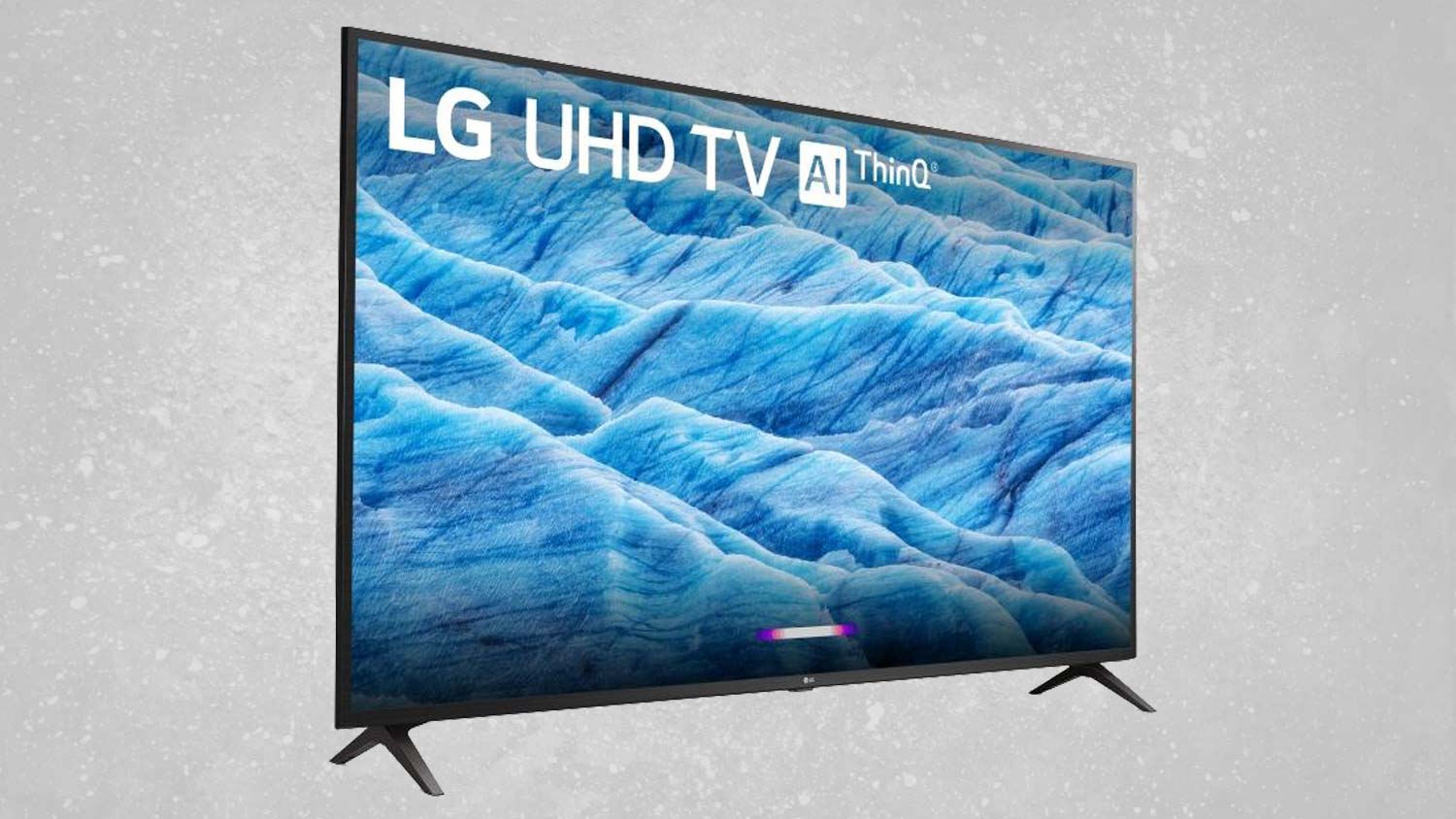
With a response time of just 12.1 milliseconds, it's the most responsive TV for gaming we've tested all year.
Overall support was good but carries the same limitations as the TV itself. Gaming in 4K and 60 Hz is ready to go, and streaming content will support various frame rates (24, 50 and 60 Hz), but HDR support is limited to HDR10. As with regular content, the TV simply doesn't support Dolby Vision.
MORE: Best TVs
When we tested the input lag on the UM7300, we saw impressive results. With a response time of just 12.1 milliseconds, it's the most responsive TV for gaming we've tested all year. It may have some imperfections in picture quality, but if your concern is shaving any lag from your gaming experience, it's the best option we've seen.
LG UM7300 audio quality
With a pair of 20-watt speakers inside to provide two-channel sound, the UM7300 doesn't provide the greatest sound quality. It also doesn't get very loud, and the lack of subwoofer is noticeable in the wimpy bass.
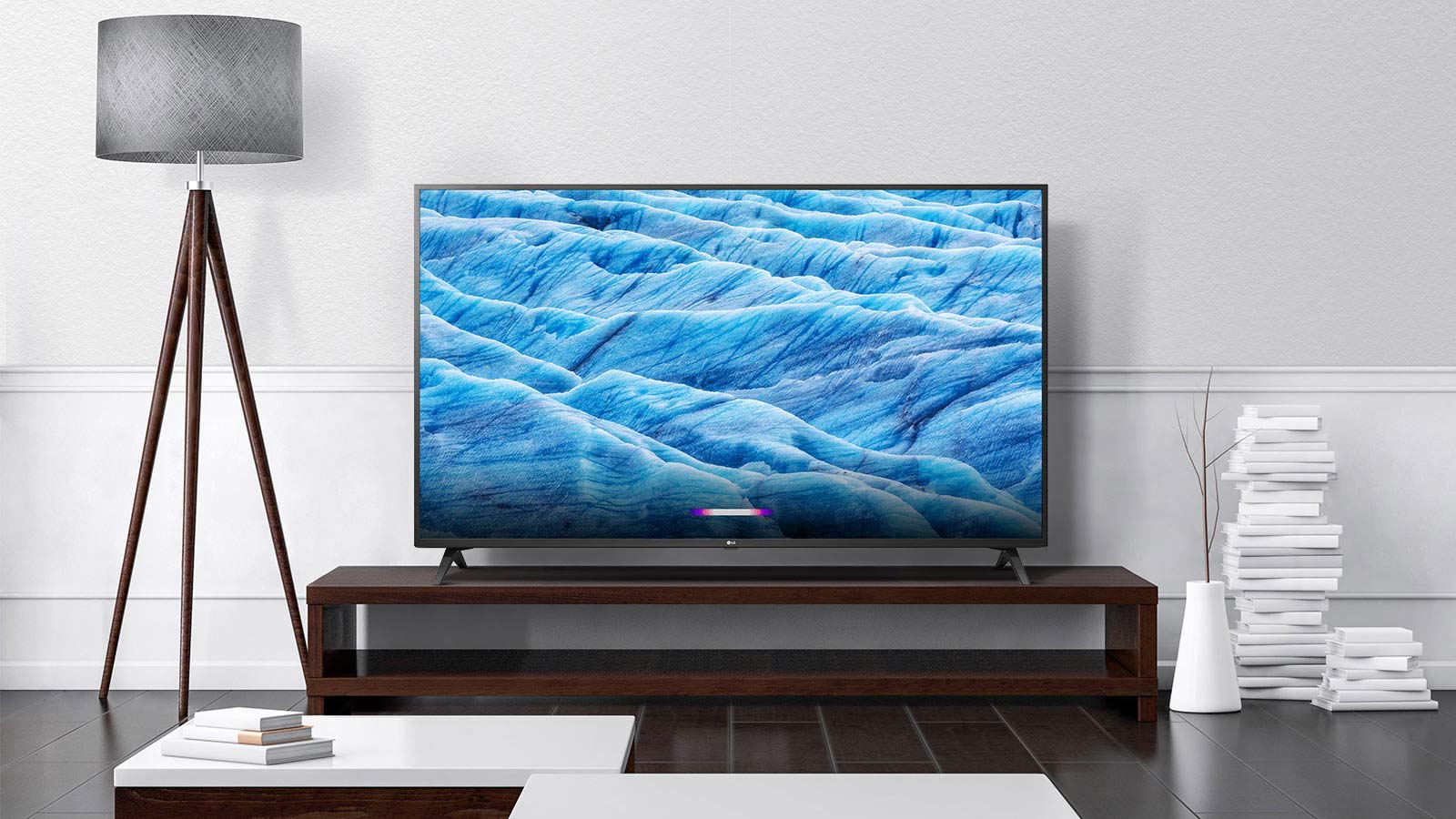
Listening to the title fight in Creed II, the dialogue between boxers and coaches was clear and easy to distinguish, but the fight – which features several low-end sounds, like the impact of punches and the roar of the crowded arena – lacked a lot of the impact it should have had. Overall sound quality was fairly clear and distortion free, and the samples of the Rocky theme song that play during the fight came through clearly, but again lacked oomph, even at higher volumes.
This is definitely one set where we recommend adding a soundbar to your home theater setup.
LG UM7300 smart features
One area where the UM7300 doesn't compromise at all is in the smart TV experience. LG's webOS is one of our favorite smart TV platforms, thanks to its slick navigation and decent app selection. A broad selection in the app store means that you'll have access to every popular streaming service, from Netflix and Hulu to Pluto TV and YouTube TV.

LG's webOS is one of our favorite smart TV platforms, thanks to its slick navigation and decent app selection.
Voice control is also built in, with Google Assistant integrated into the ThinQ AI features; it can be used for everything from content search to pulling up online information on stocks and weather.
But LG has expanded the voice interaction in 2019, offering a second voice assistant, Amazon Alexa. This makes it one of the few TVs that let you use Alexa without pairing a separate Alexa-enabled device (like the Amazon Echo Dot) to do so.
MORE: Best Smart Home Devices
The latest version of webOS also includes a tool called Home Dashboard, which aims to make the TV the central hub of your connected home. Everything from your smart thermostat and laundry machines to the best video doorbells and connected lightbulbs can be set up to work on the TV, letting you see who's at the door or adjust the mood lighting from the comfort of your couch.
LG UM7300 remote control
The LG Magic Remote is the same on the UM7300 as it is on LG's more premium models, like the LG C9 OLED, and all of the navigation features we love are still there. The Magic Remote offers motion control, letting you wave your remote to move an on-screen cursor, providing one of the most intuitive point-and-click navigation experiences offered on a smart TV.
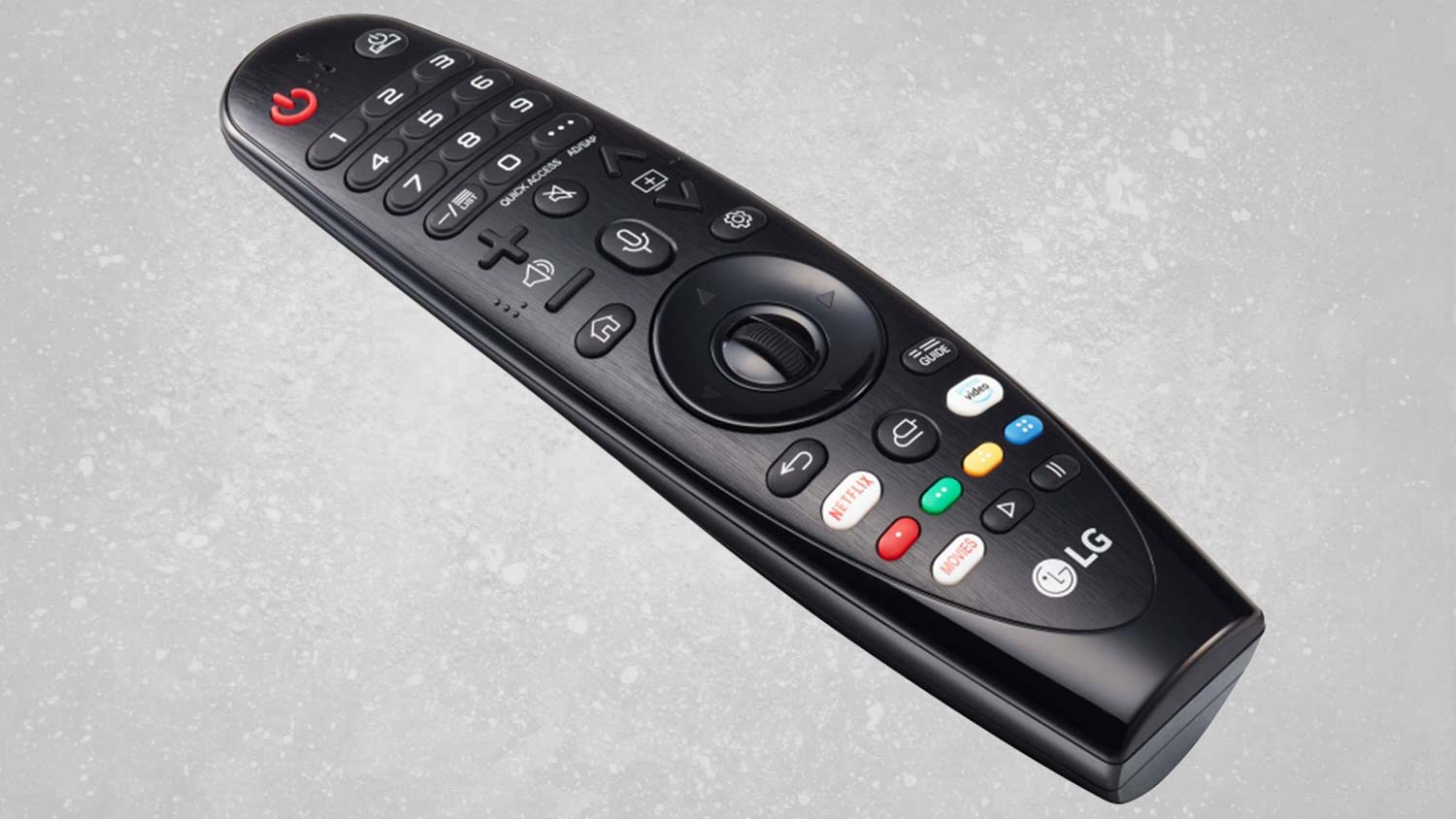
The ring-shaped directional pad has a clickable scroll wheel in the center, instead of the simple enter button used on remote controls from competing companies. The addition of scrolling is a small touch, but it makes a huge difference as you work your way through pages of Netflix recommendations or YouTube videos, and it's a feature we wish other manufacturers would adopt.
MORE: The Best Products That Work With Amazon Alexa
Now, it is worth noting that the remote control's microphone button lets you use only the TV's ThinQ AI voice assistant and Google Assistant. To use the built-in mic for Amazon Alexa, you'll need to press and hold the Amazon Prime button on the remote. It's an awkward workaround, but aside from trying to remember which button to press, it's not much of a problem.
Bottom line
The LG UM7300 is the most basic 4K smart TV offered by LG, and it shows. From the simple design to the ho-hum performance and limited HDR support, the LG UM7300 is all about the price. And, since it routinely shows up on bestseller lists from retailers like Amazon and Walmart, it's clearly doing just fine in the sales department based on the price alone. But for our money, there's a lot more that goes into value than the dollar figure on the tag.
We recommend the Vizio M-Series Quantum, a midrange model that sells for a similar price and offers better color and dynamic range, thanks to backlight with local dimming and a quantum-dot display that boosts the brightness and vibrancy of the picture. It is worth noting, however, that the LG UM7300 will offer a more robust smart TV experience than the Vizio, and if streaming apps and smart home features are what you really want in a TV, then the UM7300 is a decent choice, so long as you can accept the imperfections in picture quality.
Brian Westover is currently Lead Analyst, PCs and Hardware at PCMag. Until recently, however, he was Senior Editor at Tom's Guide, where he led the site's TV coverage for several years, reviewing scores of sets and writing about everything from 8K to HDR to HDMI 2.1. He also put his computing knowledge to good use by reviewing many PCs and Mac devices, and also led our router and home networking coverage. Prior to joining Tom's Guide, he wrote for TopTenReviews and PCMag.
